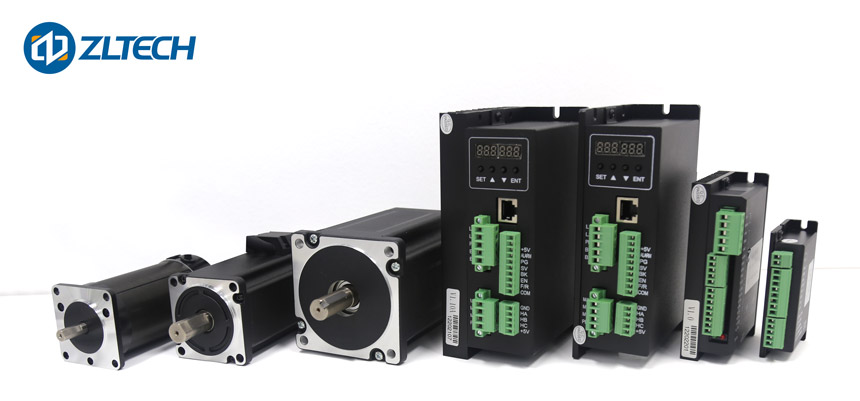The brushless DC motor consists of a motor body and a driver, and is a typical mechatronic product. Because the brushless DC motor operates in a self-controlled manner, it will not add a starting winding to the rotor like a synchronous motor with heavy load starting under variable frequency speed regulation, nor will it cause oscillation and loss of step when the load changes abruptly. The permanent magnets of small and medium-capacity brushless DC motors are now mostly made of rare-earth neodymium-iron-boron (Nd-Fe-B) materials with high magnetic energy levels. Therefore, the volume of the rare earth permanent magnet brushless motor is reduced by one frame size compared with the three-phase asynchronous motor of the same capacity.
Brushed motor: A brushed motor contains a brush device, and is the rotary motor, which that can convert electrical energy into mechanical energy (motor), or convert mechanical energy into electrical energy (generator). Unlike brushless motors, brush devices are used to introduce or extract voltage and current. The brushed motor is the basis of all motors. It has the characteristics of fast starting, timely braking, smooth speed regulation in a wide range, and relatively simple control circuit.
The working principle of brushed motor and brushless motor.
1. Brushed motor
When the motor is working, the coil and the commutator rotate, but the magnetic steel and the carbon brush do not rotate. The alternating change of the current direction of the coil is accomplished by the commutator and brush that rotate with the motor. In the electric vehicle industry, brushed motors are divided into high-speed brushed motors and low-speed brushed motors. There are many differences between brushed motors and brushless motors. From the name, it can be seen that brushed motors have carbon brushes, and brushless motors do not have carbon brushes.
The brush motor consists of two parts: stator and rotor. The stator has magnetic poles (winding type or permanent magnet type), and the rotor has windings. After electrification, a magnetic field (magnetic pole) is also formed on the rotor. The included angle makes the motor rotate under the mutual attraction of the stator and rotor magnetic fields (between the N pole and the S pole). By changing the position of the brush, the angle between the stator and rotor magnetic poles can be changed (assuming that the magnetic pole of the stator starts from the angle, the magnetic pole of the rotor is on the other side, and the direction from the magnetic pole of the rotor to the magnetic pole of the stator is the direction of rotation of the motor) direction, thereby changing the direction of rotation of the motor.
2. Brushless motor
The brushless motor adopts electronic commutation, the coil does not move, and the magnetic pole rotates. The brushless motor uses a set of electronic equipment to sense the position of the permanent magnet magnetic pole through the Hall element. According to this perception, the electronic circuit is used to switch the direction of the current in the coil in time to ensure that the magnetic force in the correct direction is generated to drive the motor, eliminating the shortcomings of the brushed motor.
These circuits are the motor controllers. The controller of the brushless motor can also realize some functions that the brushed motor cannot, such as adjusting the power switching angle, braking the motor, reversing the motor, locking the motor, and using the brake signal to stop the power supply to the motor. Now the electronic alarm lock of the battery car makes full use of these functions.
Different advantages of brushless motors and brushed motors
The brushed motor has its advantages, that is, the cost is low and the control is easy. The cost of brushless motors is generally much higher, and more professional knowledge is required in control. With the continuous maturity of brushless motor control technology, the decline in the cost of electronic components, the improvement of people’s requirements for product quality, and the pressure on energy conservation and emission reduction, more and more brushed motors and AC motors will be replaced by DC brushless motors.
Due to the existence of brushes and commutators, brushed motors have complex structure, poor reliability, many failures, heavy maintenance workload, short life, and commutation sparks are prone to electromagnetic interference. The brushless motor has no brushes, so there is no related interface, so it is cleaner, has less noise, in fact requires no maintenance, and has a longer life.
For some low-end products, it is completely possible to use a brushed motor, as long as it is replaced in time. However, for some high-value products, such as air conditioners, automobiles, and printers, the cost of replacing hardware is too high, and it is not suitable for frequent replacement of parts, so long-life brushless DC motors have become their best choice.
Shenzhen Zhongling Technology Co., Ltd. has been focusing on the research of stepper motor and servo motor since its establishment, and has obtained a number of patents and has rich experience. The stepper motors and servo motors produced by the company are also sold at home and abroad, becoming the best choice for many robot companies and many automation equipment manufacturing companies.
Post time: Dec-27-2022
